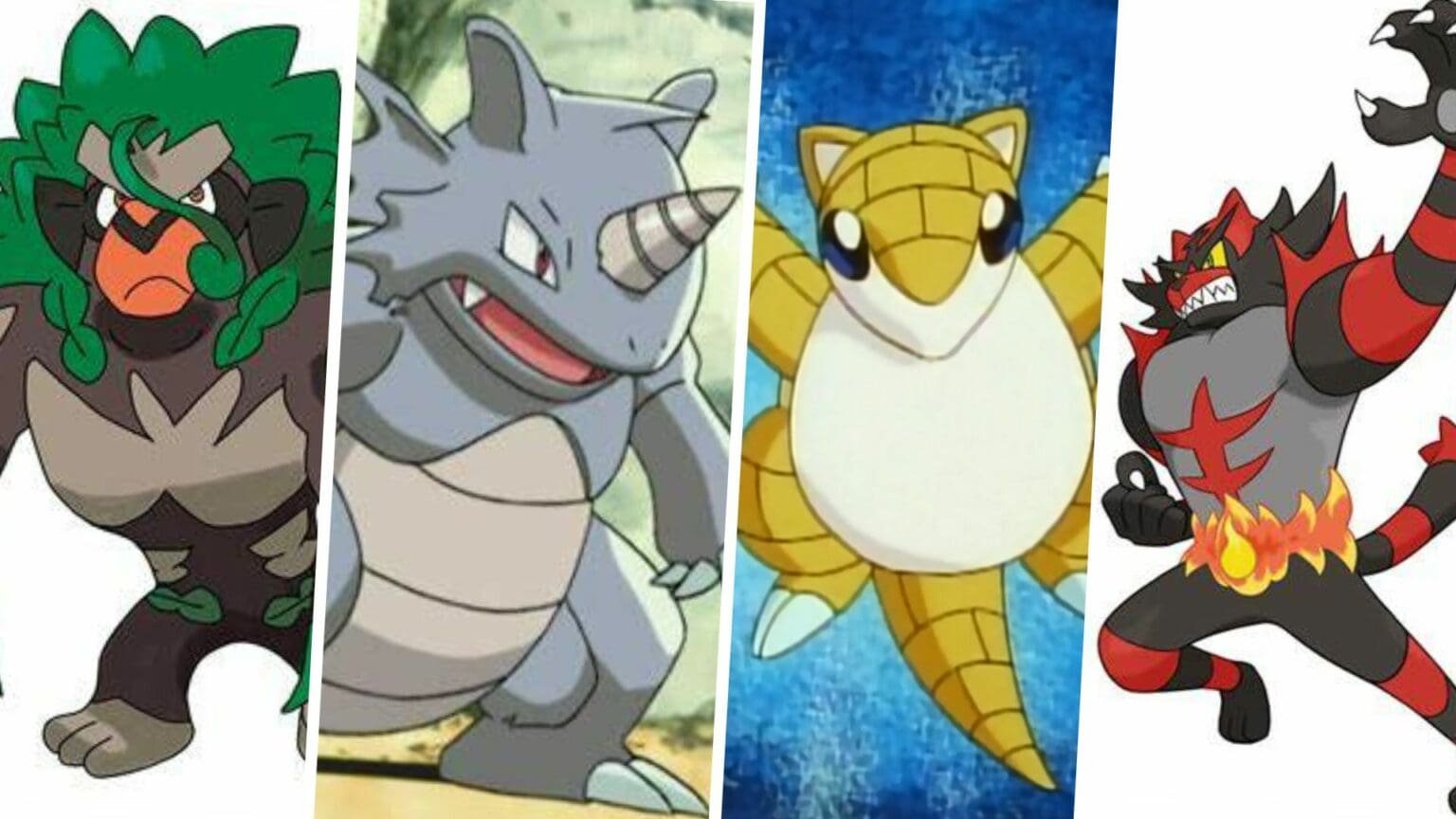“Gotta catch ‘em all… Pokémon!” – If this line struck a nostalgic chord with the readers, it means they are one of the millions of 90s kids who grew up watching the friendship of a perpetually ageless 10-year-old boy and his electric mouse companion as they journeyed across the world to be the best. Yes, I am talking about Ash and Pikachu, the mascots and main characters of the Pokémon anime franchise.
But the desire to “catch” them all… do yo know where that stems from? The creator of the series was a young man named Satoshi who liked collecting small organisms, which manifested in the series and its narrative design. While seemingly harmless, did you know that the practice of collecting animals and making them fight is a real issue plaguing conservation in the real world?
Yes, you heard right. Many species in the world are now extinct or functionally endangered because of climate change, habitat loss, illegal trade of real animals and their body parts… and so much more! The connection between real animals and Pokémon does not end here, as many species in this fictional universe are based on endangered animals. Did you know that the various rodent-like analogues of Pikachu are based on actual small mammals in our world, or that the different regions and their fauna are based on the corresponding creatures and locations of real places?
It is fascinating to explore these parallels, especially on Endangered Species Day. Celebrated on 19th May, the date seeks to celebrate conservation efforts in stopping extinction or simply remind us of the various species that we co-inhabit the world with. We attempt to do the same here, in the way that we know best. Without further ado, let’s look at the various Pokémon that have been inspired by actual endangered creatures.
Dewgong and 9 Pokémon inspired by real endangered animals
-
Drowzee and Tapir
Drowzee was one of the original Pokémon that evolved into Hypnos, and but there’s one more source of inspiration that lies sandwiched between the two. The baku was a creature from Japanese myth said to eat the dreams of people, and it was based of the endemic Asian tapir. However, this tapir, the actual animal that gave rise to the legend and became the inspiration for the actual animal is endangered now.
Deforestation, which results in habitat loss and devastation, is the biggest threat to the Malayan tapir. Large areas of forests have been cleared in Malaysia and Thailand to make way for the growing of oil palms. Between 2006 and 2010, 142 Malayan tapirs were displaced due to habitat fragmentation in peninsular Malaysia; some were saved and transferred, and 15 of them were killed on the road.
-
Dewgong and Dugong
The dugong is a unique animal that is not related to whales and dolphins but to… yes, elephants. Despite lacking any visible similarities this species of marine mammal called the sea-cow is responsible for the design choice and naming for Dewgong, the final evolution of the water-starter Seel. But don’t let this animal’s bright smile and cheery demeanour fool you… it’s condition in the wild is far from happy.
Sea grass habitat loss or degradation brought on by coastal development or industrial operations that contaminate water poses a hazard to dugongs. The dugong does not breed normally if there is not enough sea grass available for them to consume. Because of this, protecting their shallow water marine habitat is crucial. They frequently end up being caught accidentally in fishing nets, or “bycatch.”
-
Sandshrew and Pangolin
This comparison is more visible, isn’t it? The lovely and adorable Sandshrew with its scaly body and tendency to roll up is undoubtedly based on the pangolin, a strange-looking ant-eating animal that lives in Asia. The pangolin’s best defence is to roll up in a ball and Sandshrew does the same, but unlike its fictional counterpart, the condition of the actual animal is very deplorable in the wild.
Pangolins, often known as scaly anteaters due to their favoured diet, are the most trafficked mammals in the world. Demand for their meat and scales is highest in Asia and is increasing in Africa. Additionally, there is a market for pangolin products in the US, particularly for the leather that may be used for boots, bags, and belts.
-
Rhydon and Rhinoceros
The rhinoceros is one of the large mammals that has received close attention over the years owing to its endangered status. Did you know that there are five species of rhino in the wild and all of them are on the verge of extinction, some more than others? If Rhydon had been alive in the real world, it might have been able to use its superior attack powers and found a way to fight off the poachers looking to steal its horn, or use a ground-shaking earth-quake attack to damage their vehicles.
Unfortunately, Pokémon aren’t real and these powers are only fantasies we ascribe to them. Rhino numbers are dwindling as a result of economic development, changes in the character of the grasslands, logging, and agriculture that degrade and destroy wildlife habitats. Since good genetic mixing is more challenging in smaller groups, the remaining rhinos are prone to inbreeding and reside in dispersed, isolated locations.
-
Rillaboom and Gorilla
Gorillas are naturally appealing because of their humanlike faces, power and intelligence. They are like us, and in stories like King Kong they have been humanized to uncanny degrees. Rillaboom is a gorilla-based Pokémon and while it still retains its fantastic attributes, the ape-like tendencies are evident. The desire to hit its chest and make loud noises is a behavioural pattern of these silverback gorillas in the wild.
But none of these noises reach the ears, and definitely not the hearts of the ones diminishing their habitat or killing them in scores. The greatest threat to gorillas today is the commercial traffic in bushmeat, which takes place throughout west and central Africa. Apes are mostly murdered to meet the upscale demand for meat in urban areas, where the wealthy elite view the ingestion of ape flesh as prestigious. Are they like us? Definitely. But are they like us enough to make us view this abominable practice as cannibalism? Nopes.
-
Fennekin and Fennec Fox
Fennekin is one of the starters of the Kalos region and as a fire-type, this Pokémon’s graceful movements enable it to become as beautiful as it is terrifying while fighting especially after its final evolution. At the same time, neither of these could be farther from the truth when looking at the actual animal in question. The fennec fox is a small member of the dog family that inhabits the deserts and dusty areas of Africa, and while often going under the gaze of conservationists and poachers alike, this fox is facing a swift demise due to increasing devastation of its home.
Fennec foxes are mostly threatened by human involvement. There have been a few rare examples of fennec populations being encroached upon by human settlements, and they are frequently trapped for display or sale to visitors. Native peoples in the Sahara region pursue fennec foxes as well.
-
Incineroar and Tiger
The national animal of India. The biggest member of the cat family. The regal stalker of the dark forests with a mesmerizing yet deadly stare. None of these things have managed to save the tiger, which is the primary inspiration for Incineroar. Incineroar’s fire powers make it a potent force in the battling arena but lacking this extra elemental advantage, tigers are forced to stare down the edge of a barrel with a different line of fire ending their species.
An estimated 95% of the historical range of tigers has been gone. Human activities have damaged, fractured, and destroyed their environment. Tiger habitats are seriously threatened by the removal of forests for farming and logging, as well as by the construction of road networks and other development projects.
-
Pancham and Giant Panda
The giant panda is a symbol of extinction so much so that it has become the emblem of the World Wildlife Fund. While docile and more harmless than other members of the bear family, this unique carnivore subsists entirely on a meal of bamboo. Pancham is undoubtedly a panda, deriving the colouration and physique of the actual animal even though it has an extra buffness quotient to give it an advantage in fights.
Panda populations are becoming more and more isolated and fragmented as a result of infrastructure development (such as dams, roads, and railroads), making it difficult for pandas to locate fresh bamboo forests and suitable mates. The pandas’ access to the bamboo they require for survival is also diminished by forest destruction.
-
Komala and Koala
Koala-like in colour, Komala is a grey Pokémon. It has broad, rounded ears that are lined with pale orange fur. Its fluffy white eyebrows and extra white fur puffs on each cheek are positioned over its broad, oval black nose. Around its neck is a tiny ruff of longer, grey fur. There are five short, black fingers on each hand, three black claws, and a black paw pad on each foot. Both its small fluffy tail and its underside are white. In other words, it embodies “cute” much like its actual-world equivalent.
Unlike Komala however, koala populations are severely declining as a result of habitat loss, domestic dog attacks, bushfires, and traffic accidents. According to the Australian Koala Foundation, there may be as few as 32,065 Koalas surviving in the wild, which is less than the estimated 57,920. Here, you can see how we arrived at those numbers.
-
Wailord and Blue Whale
It is no surprise that the largest Pokémon in the world is based off the largest animal to ever live on our Earth. Wailord’s inspiration born of the blue whale is no surprise, it has the underbelly similar to our oceanic giant and a similar colouration too. In a similar way of manifesting irony, Wailord, despite being the biggest animal of its world is still at risk of being captured in a Poke-ball by trainers while the blue whale, despite being one of the largest species is still at danger from human beings.
Worldwide commercial whaling activity resulted in a severe decline in blue whale populations. Blue whales are now protected by the Marine Mammal Protection Act and listed as endangered under the Endangered Species Act. Furthermore, oceanic pollution and oil spillages along with global warming threaten this gentle giant.





